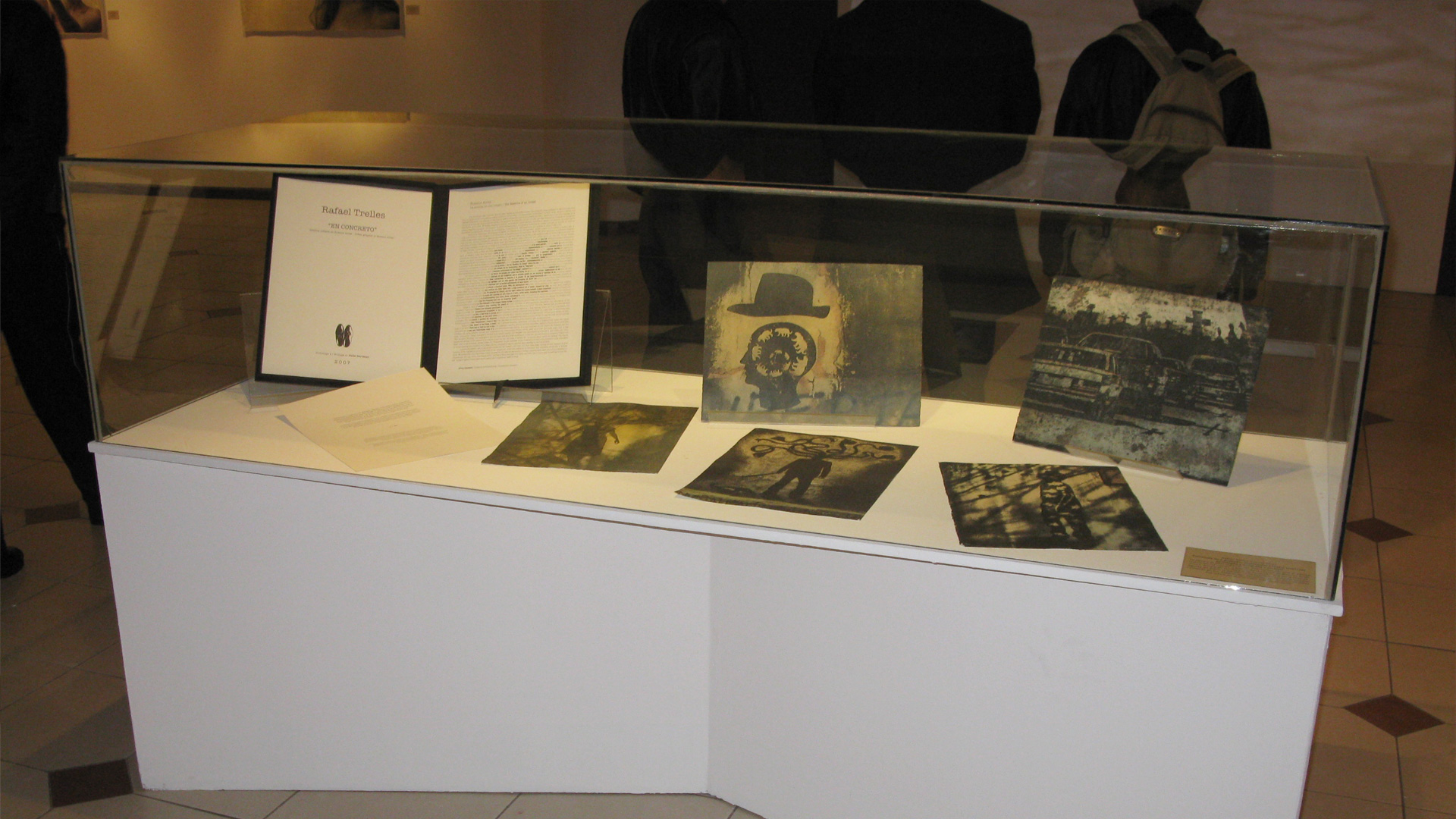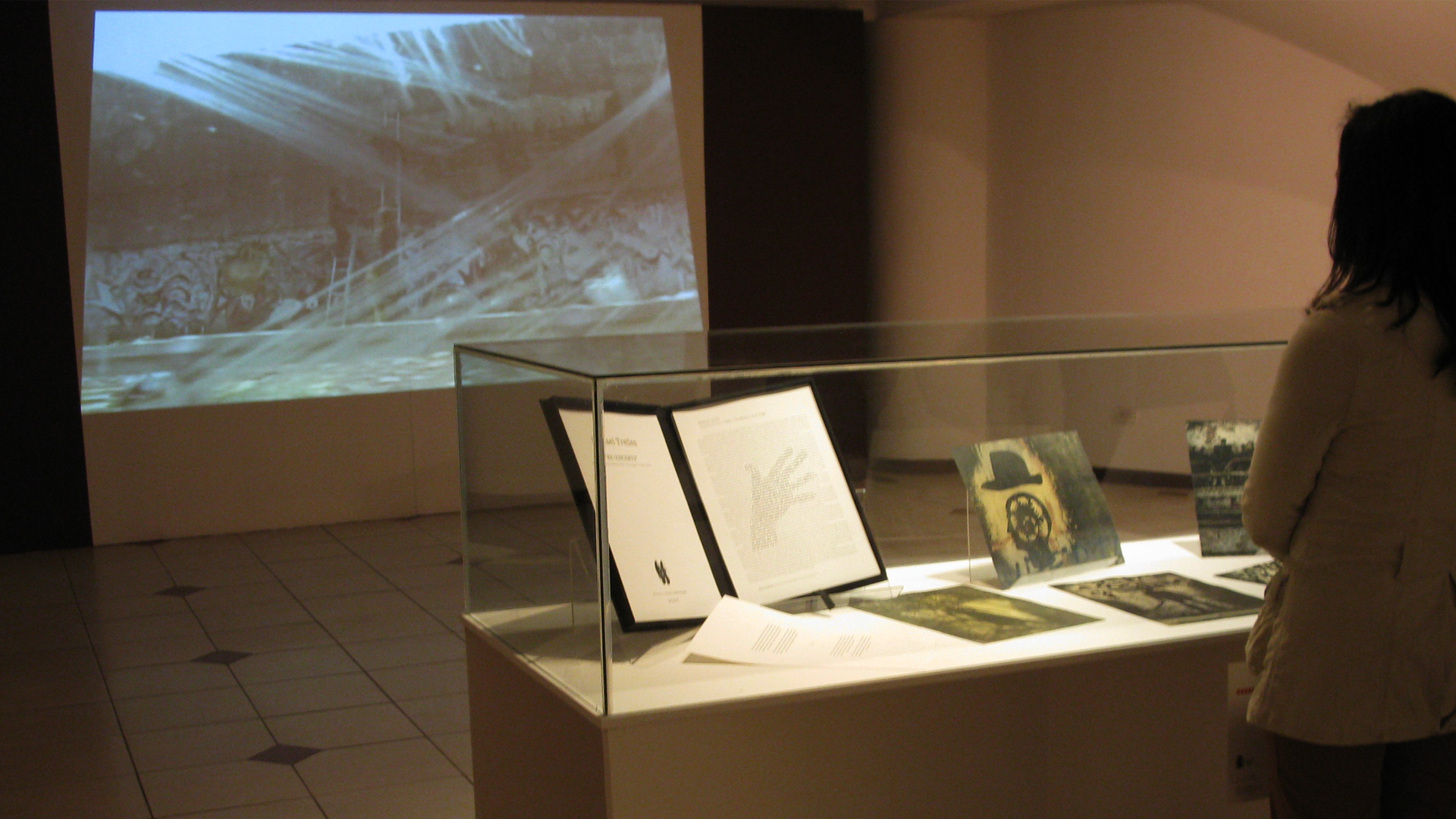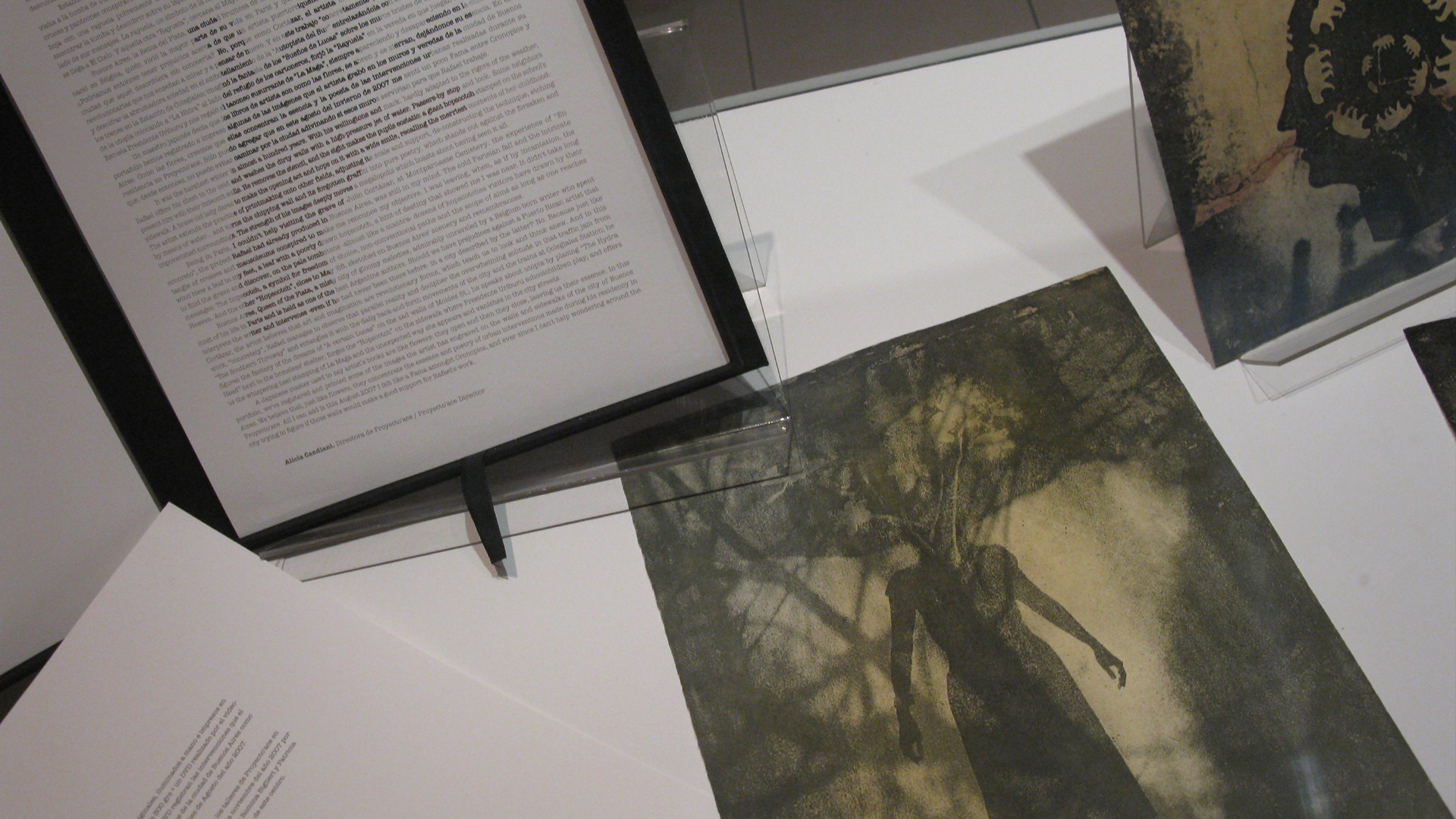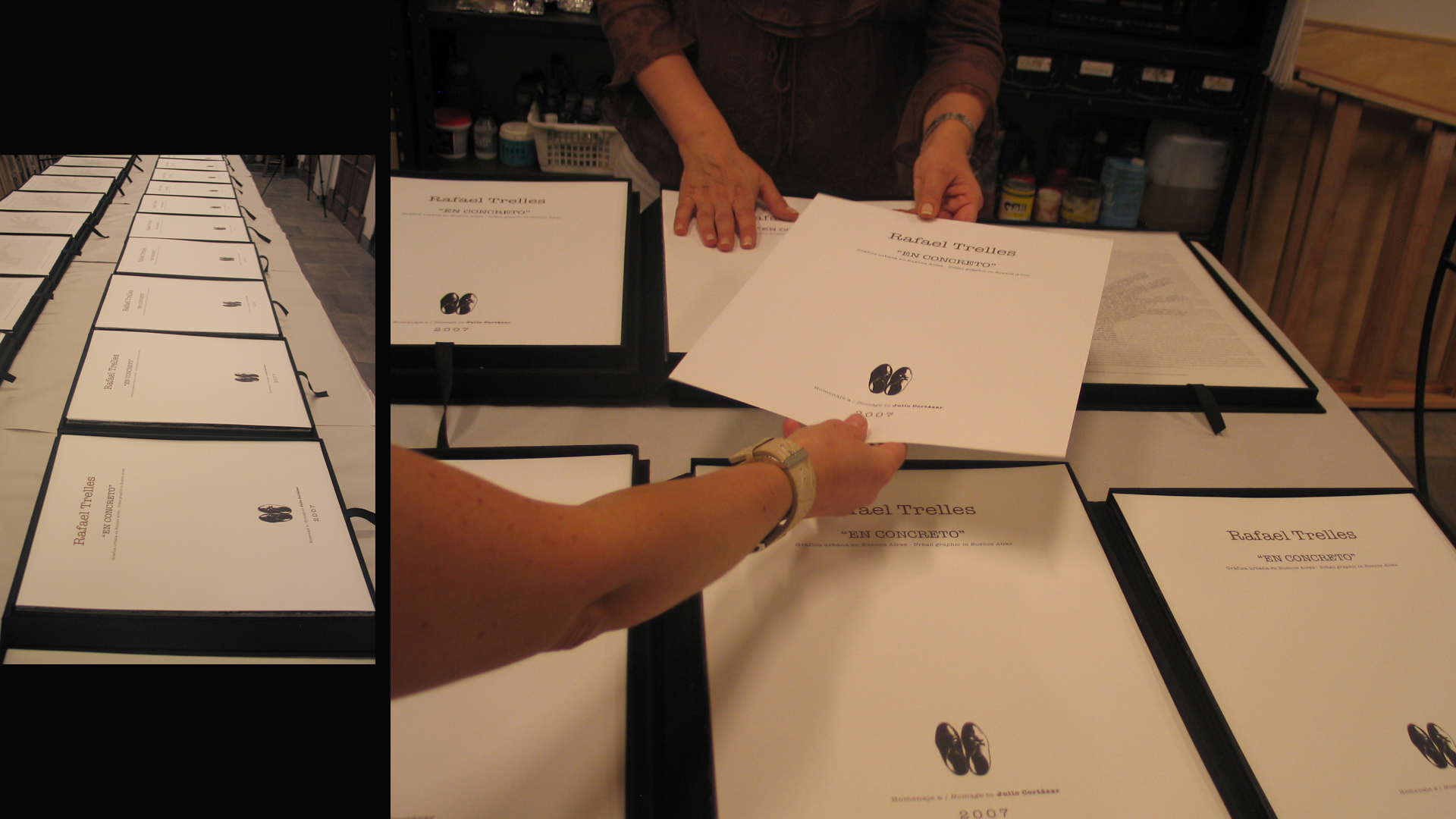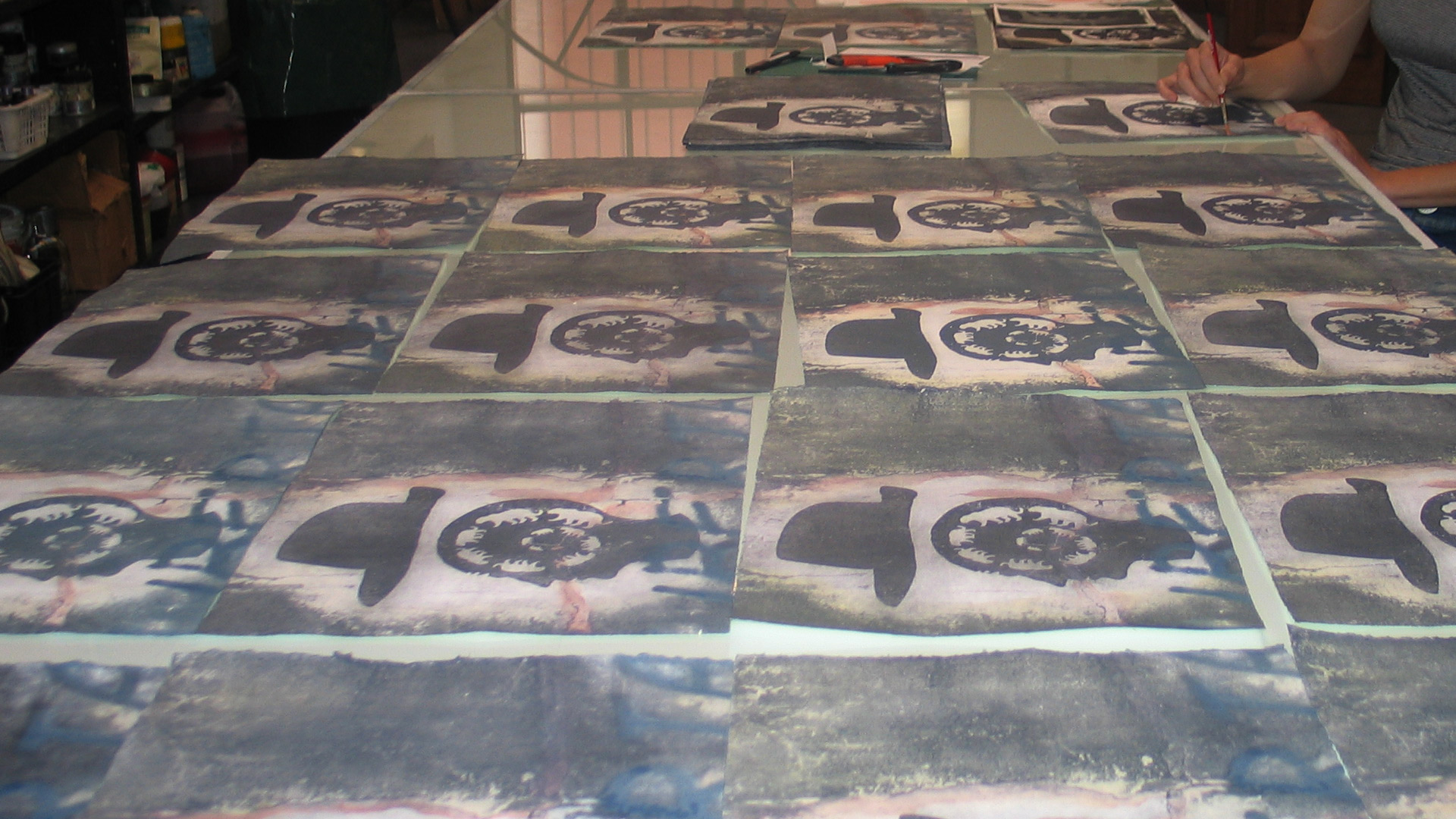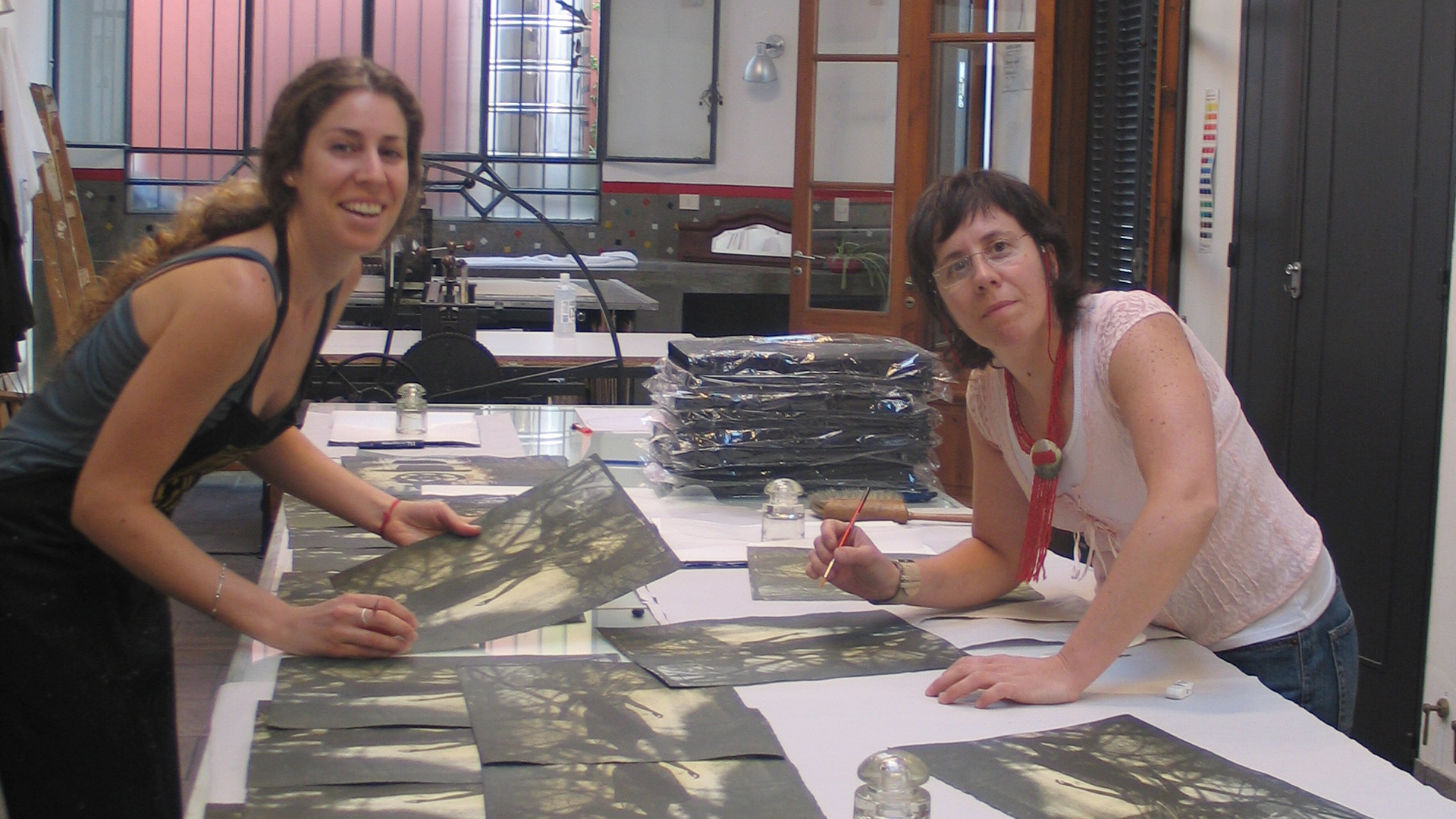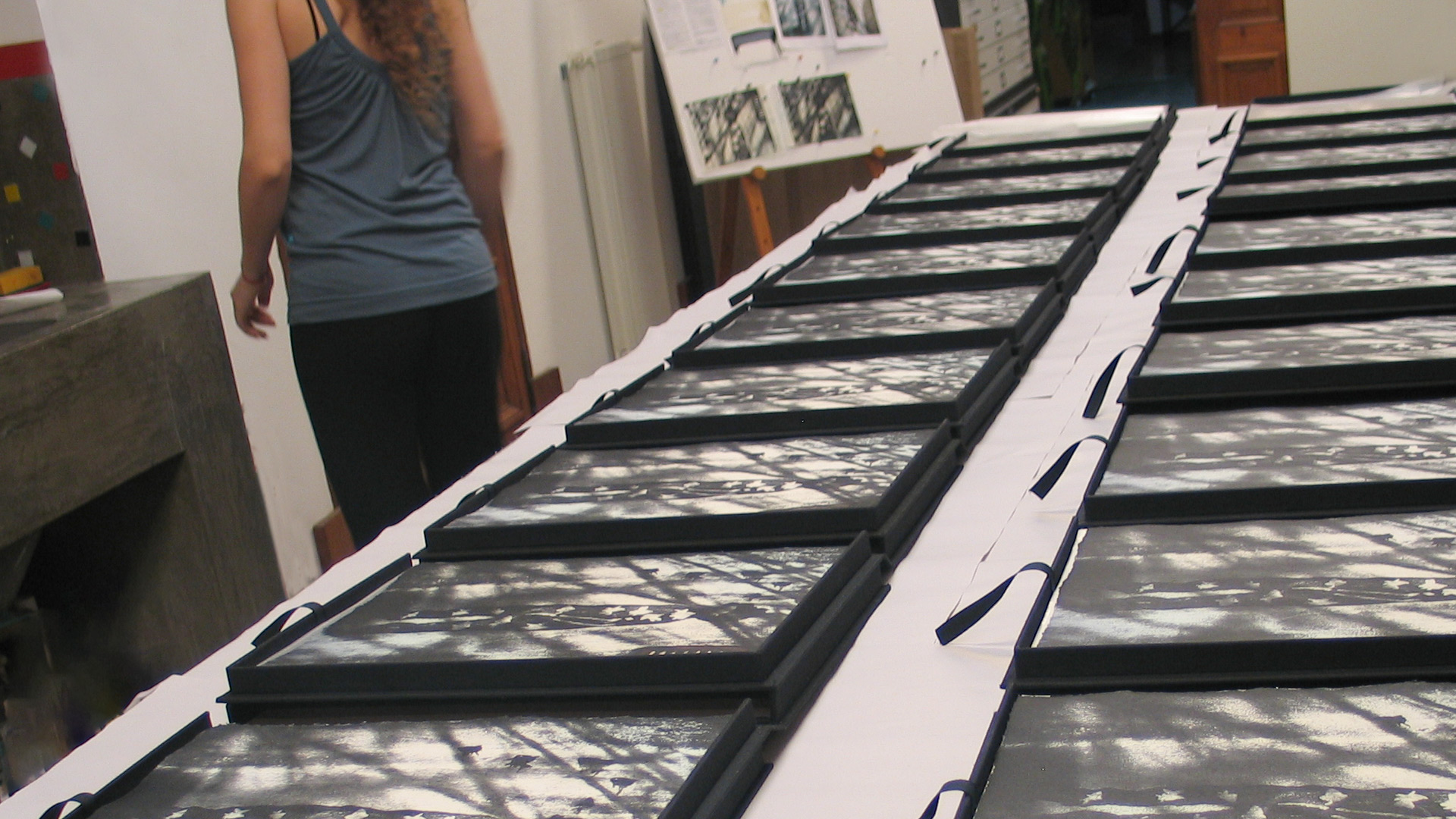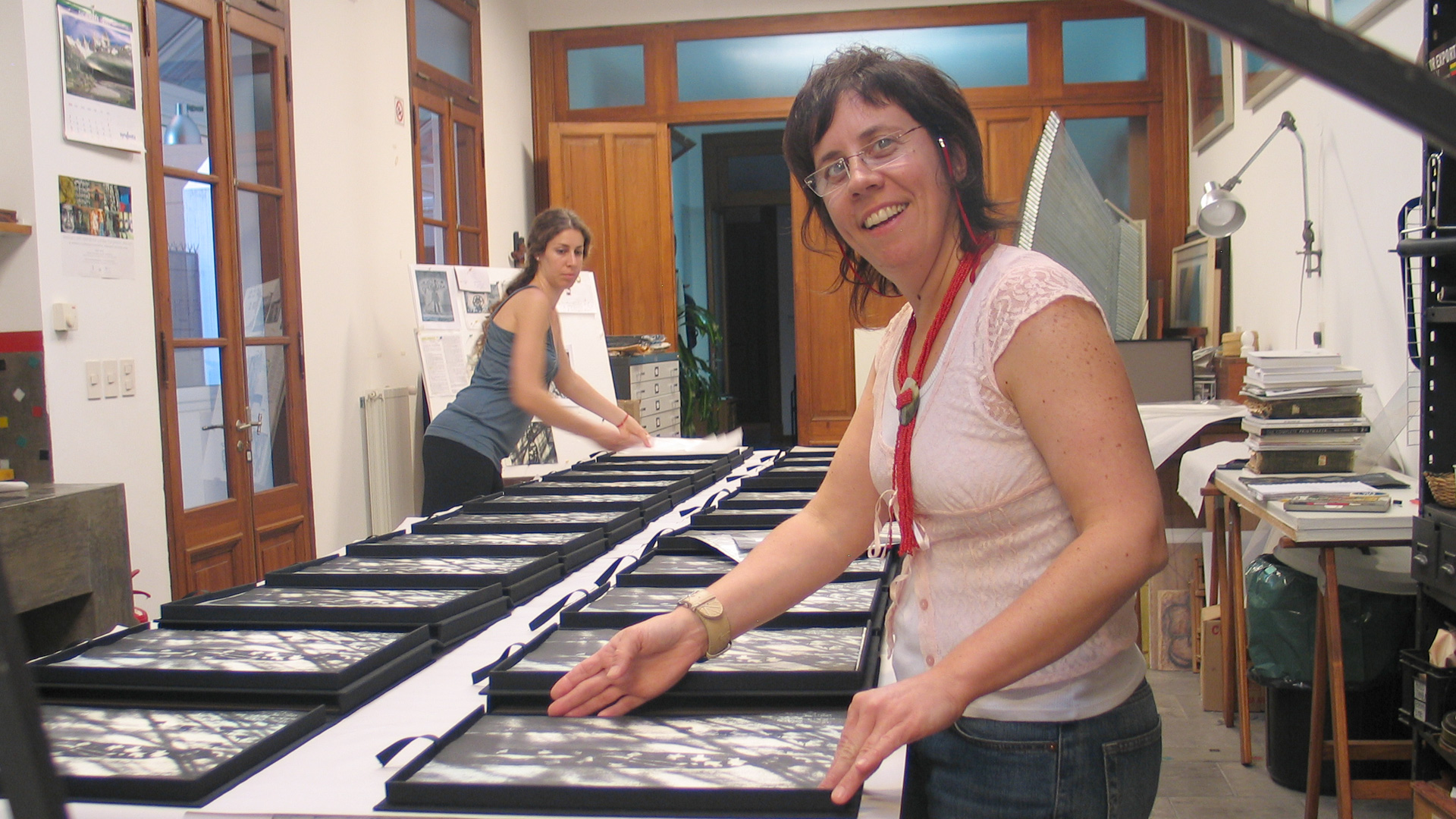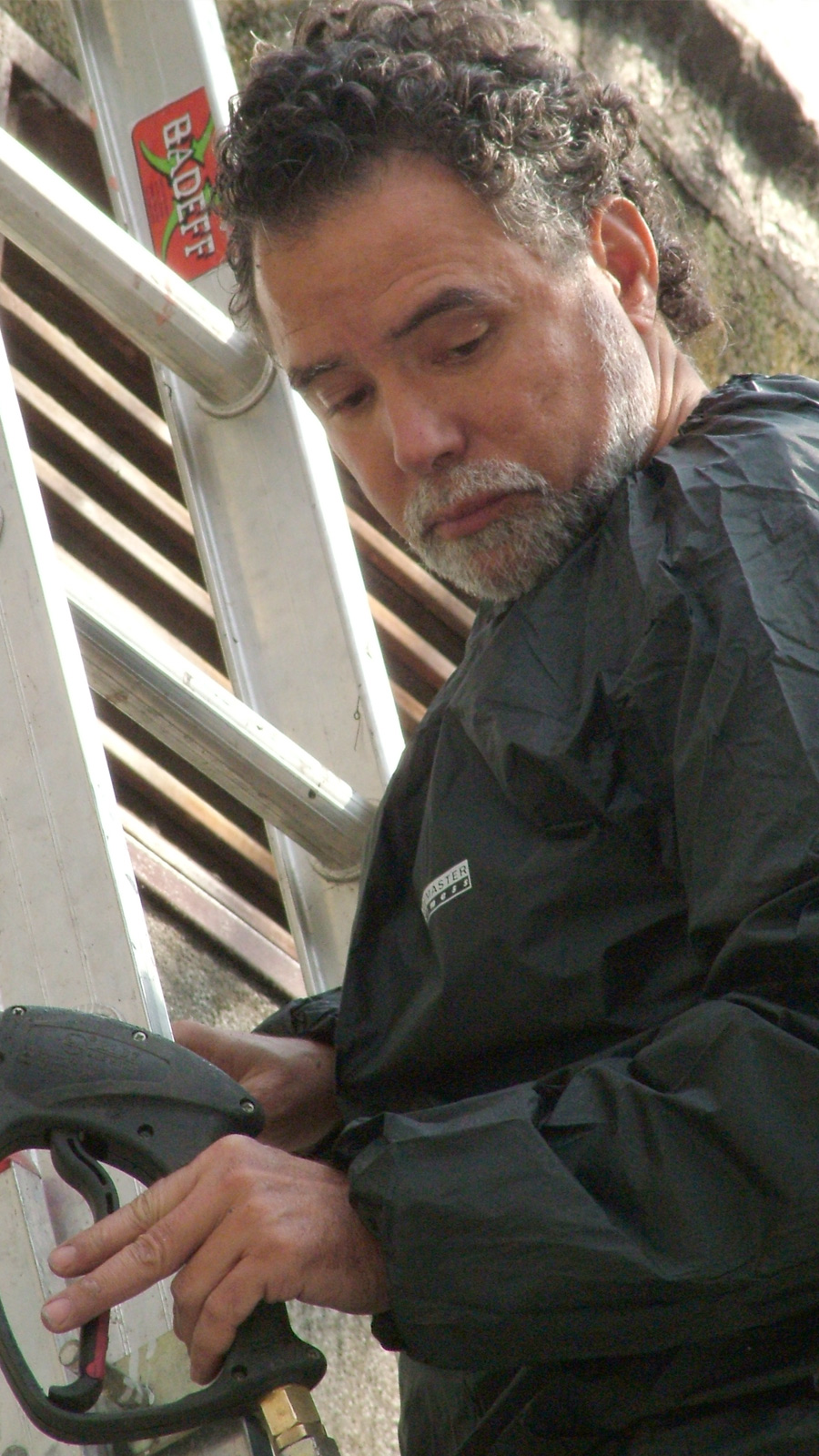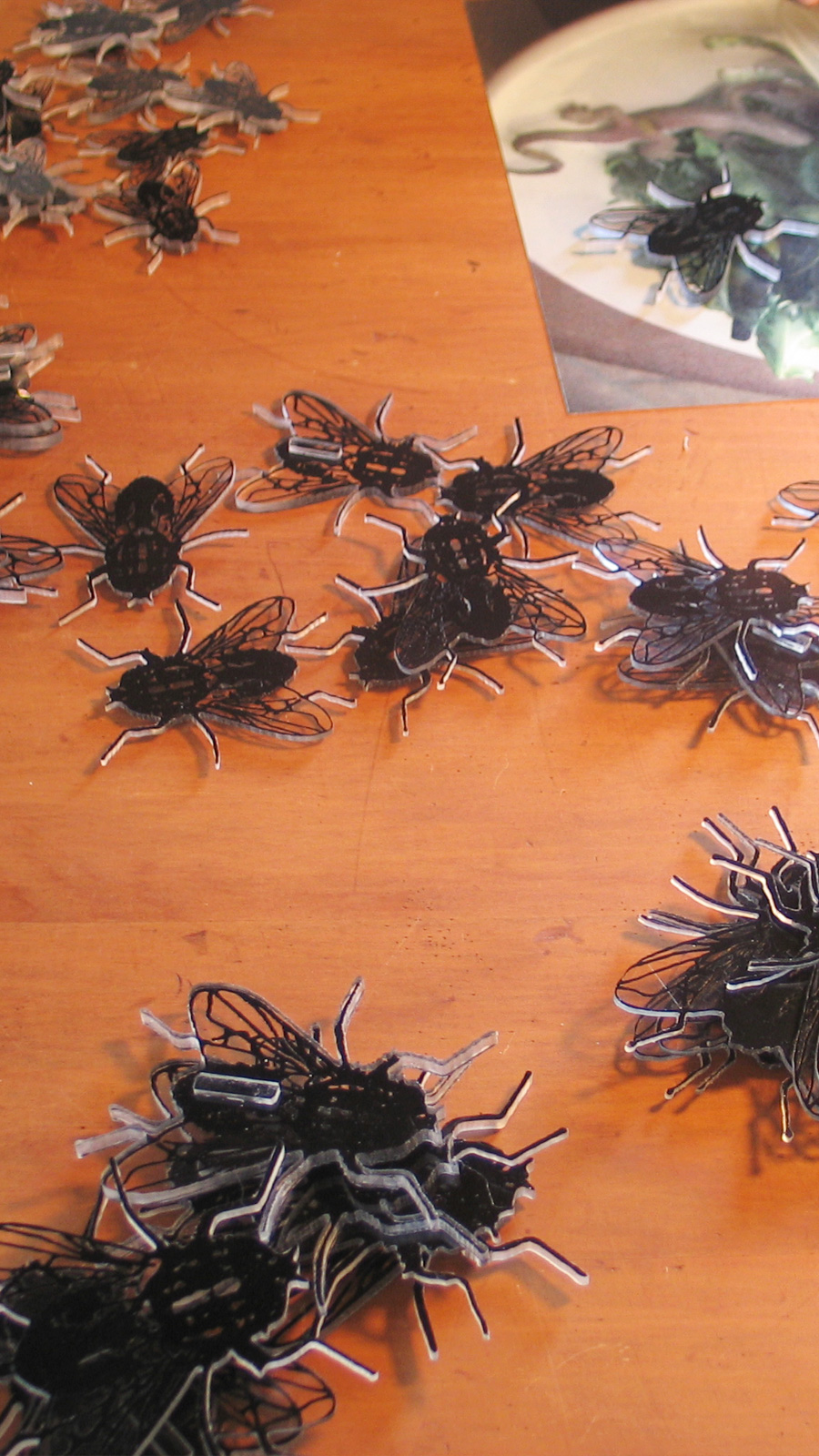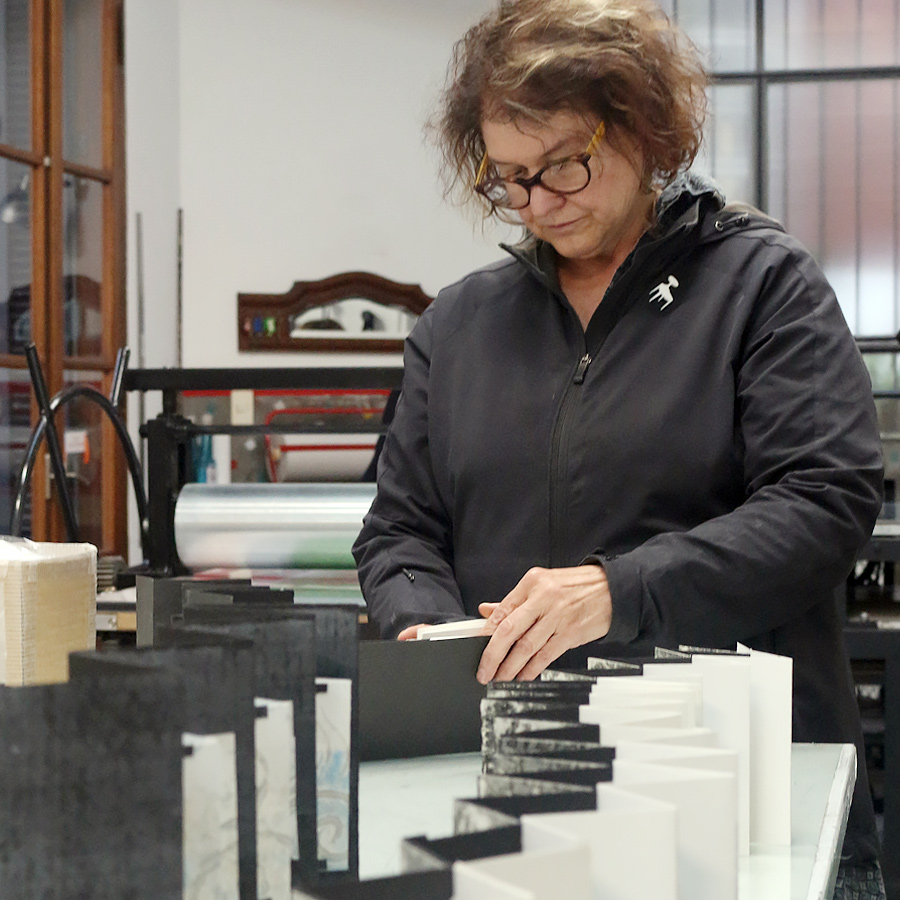Activities
Artist Book, Editions
Portfolio In Concrete
Rafael Trelles
10.09.07 09.11.07
Buenos Aires: The essence of an Image
Foreword to the portfolio “On Concrete” by Alicia Candiani
It was the harshest winter in almost a hundred years. With his wellingtons and mack, hardly adapted to the rigor of the weather, Rafael offers his chest to the cold and washes the dirty walls with a high-pressure jet of water. Passers-by stop and look. Some neighbors present him with their indecent walls. He removes the stencils, and the sights makes the pupils ecstatic: a giant hopscotch printed on the school’s sidewalk. A brave old lady dares to make the opening act and hops on it with a wide smile, recalling the merriest moments of her childhood. The artist expands the practice of printmaking onto other fields, adjusting its scale and support, de-constructing the technique, etching by means of water…and turns the chipping wall and its forgotten graffiti into pure poetry, which stands out against the forsaken and impoverished surroundings. The strengths of his images deeply move a megalopolis which boast about having seen it all.
Being in Paris, I could not help visiting the grave of Julio Cortázar, at Montparnasse Cemetery. The experience of “On Concrete”, the project that Rafael had already produced in Buenos Aires, was still in my mind. The cold Parisian fall and the intricate tangle of crosses and mausoleums conspired to make me renounce my objective. I was leaving, when, as if by incantation, the wind blew a leaf of my feet, a leaf with a poorly drawn hopscotch, a hint of destiny that showed me I was near. It did not take long to find the grave and discover, on the pale tombstone almost like a mantra- dozens of hopscotches visitors have drawn by their messages. The hopscotch, a symbol for freedom of choice, non-conventional paths and the scope of aims as long as one reaches Heaven. And the other Hopscotch, close to May ´68, sketched on Buenos Aires’ scenery and remembrances.
Buenos Aires, queen of the Plata, a misty city of gloomy melodies, admirably unraveled by a Belgium-born writer who spent most of his life in Paris and is held as one of the best Argentine authors. Should we have prejudices against a Puerto Rican artist that interprets the writer and intervenes -even if he had never been before- in a city described by the latter? No. Because just like work, “concretely”, Rafael manages to observe the parallel reality and decipher the overwhelming solitude in that traffic jam from “The Southern Thruway” and entangles it with the daily back-and-forth movements of the city and trains at Colegiales Station; he figures the fantasy of the dreams of “A Certain Lucas” on the sad walls of Moldes St.; he speaks about utopia by placing “The Hydra Head” next to the homeless shelter: forges the “Hopscotch” on the sidewalk where President Uriburu schoolchildren play; and offers us the whispering heel stamping of La Maga and the unexpected way the appears and vanishes in the city streets.
A Japanese master used to say artist´s books are like flowers: they open and then close, leaving us their essence. In this portfolio, we have registered and printed some of the images the artist has engraved on the walls and sidewalks of the city of Buenos Aires. We believe that, just like flowers, they concentrate the essence and poetruy of the urban interventions made during his residency in Proyecto´ace. All I can add is this August 2007 I felt like a Fama among Cronopios, and ever since I cannot help wondering around the city trying to figure if those walls would make a good support for Rafael’s work.
Related artists
This portfolio includes five original hand illuminated intaglios combines with planographic printing on Rivers BFK 300 grs. paper + a DVD recorded by the video-documentalist Roberto Otero. The art works and the DVD register the interventions that the artist Rafael Trelles made onto the walls and sidewalks of Buenos Aires city during his residency in Proyecto´ace, august 2007.
The edition was printed in Proyecto´ace print studios in Buenos Aires, Argentina from September to November 2007 by the masterprinter Adriana Moracci with the assistance of Romina Biglieri, under the supervision of Alicia Candiani, director of the center, who also designed the box-cases built by the bookbinder Carlos Quesada.
As part of Proyecto´ace international promotion, the portfolio was exhibited within “Episodes & Itineraries 2: Quito Chapter” (2008) in Ecuador and a copy was donated to the collection of the National Graphics Workshop within the MECA (Mega Space for Culture and the Arts) in Aguascalientes, Mexico in 2016.
